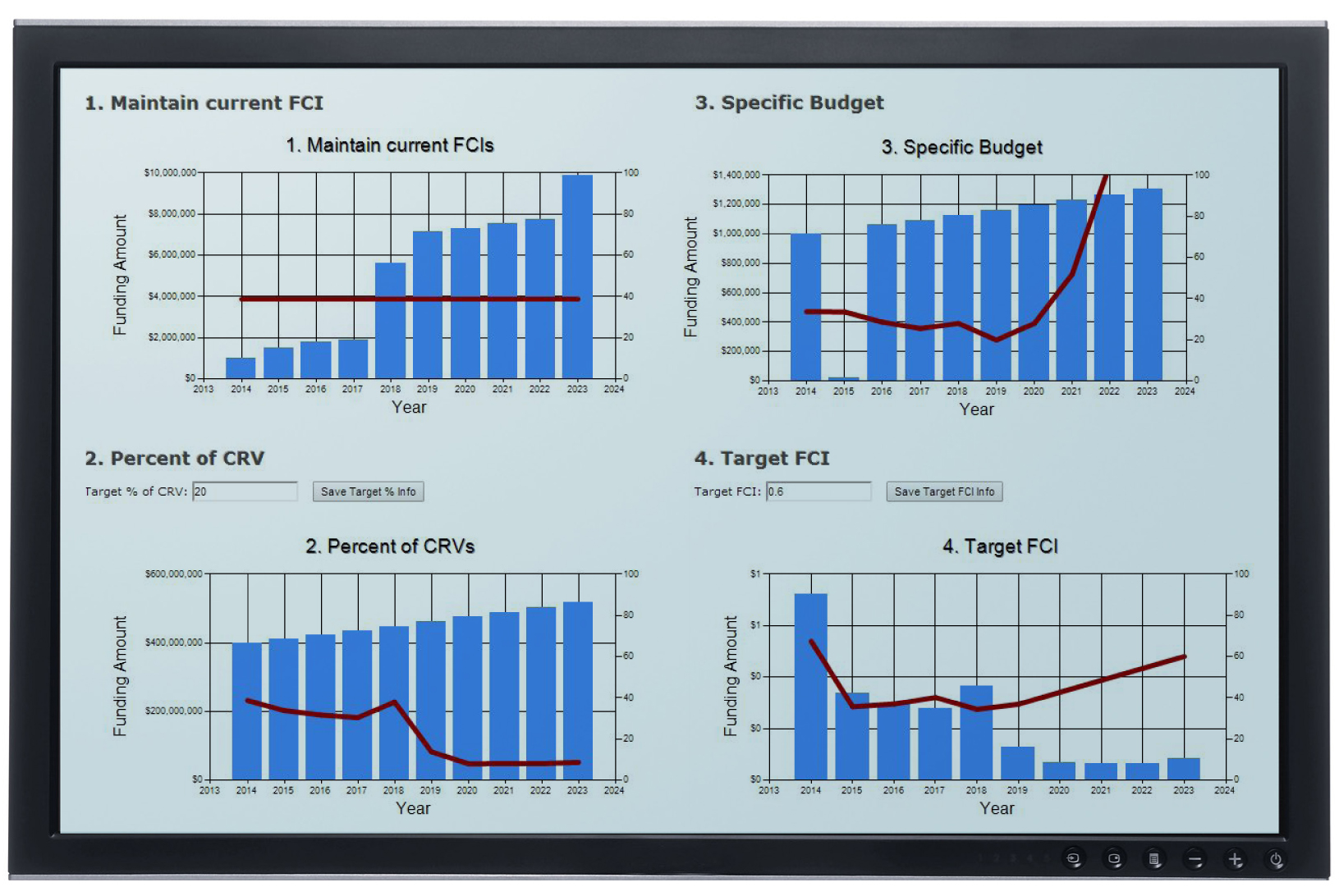CannonDesign Facility Optimization Solutions has released proprietary Facility Condition Assessment (FCA) software focused on empowering organizations to manage existing facility assets and operations more efficiently and effectively.
The FCA software creates a database populated by facility assessment data that becomes a planning tool for organizations, giving them the power to strategically track facilities and development needs while managing repairs and capital projects in a predictable, efficient manner. Specifically, the database:
- Identifies critical failures of components and systems, code and ADA-compliance issues
- Promotes proactive maintenance programs
- Helps budget for capital projects through cost escalation on an annual basis over a five, 10 of 20 year period.
- Systematically justifies prudent expenditures
- Directly corresponds to criteria required by government authorities and client protocols
The FCA software is available to organizations via the cloud across traditional and mobile platforms, serving as a web-based facility assessment tool for assessment, analysis and action. CannonDesign’s team of licensed architects, engineers and cost estimating professionals is capable of executing the assessment to collect the facility data for population. Data collected by the assessment team during the day can be uploaded in the evening, quality checked and available for viewing the next day.
The software is already driving value for a number of organizations including Buffalo Public Schools, University of Illinois and Charlotte County, Florida. For more information about the FCA software and CannonDesign Facility Optimization Solutions visit http://www.cannondesign.com/practice/services/facility-optimization/.
Related Stories
| Aug 11, 2010
'Flexible' building designed to physically respond to the environment
The ecoFLEX project, designed by a team from Shepley Bulfinch, has won a prestigious 2009 Unbuilt Architecture Design Award from the Boston Society of Architects. EcoFLEX features heat-sensitive assemblies composed of a series of bi-material strips. The assemblies’ form modulate with the temperature to create varying levels of shading and wind shielding, flexing when heated to block sunlight and contracting when cooled to allow breezes to pass through the screen.
| Aug 11, 2010
New book provides energy efficiency guidance for hotels
Recommendations on achieving 30% energy savings over minimum code requirements are contained in the newly published Advanced Energy Design Guide for Highway Lodging. The energy savings guidance for design of new hotels provides a first step toward achieving a net-zero-energy building.
| Aug 11, 2010
Perkins+Will master plans Vedanta University teaching hospital in India
Working together with the Anil Agarwal Foundation, Perkins+Will developed the master plan for the Medical Precinct of a new teaching hospital in a remote section of Puri, Orissa, India. The hospital is part of an ambitious plan to develop this rural area into a global center of education and healthcare that would be on par with Harvard, Stanford, and Oxford.
| Aug 11, 2010
Burt Hill, HOK top BD+C's ranking of the nation's 100 largest university design firms
A ranking of the Top 100 University Design Firms based on Building Design+Construction's 2009 Giants 300 survey. For more Giants 300 rankings, visit http://www.BDCnetwork.com/Giants
| Aug 11, 2010
PBK, DLR Group among nation's largest K-12 school design firms, according to BD+C's Giants 300 report
A ranking of the Top 75 K-12 School Design Firms based on Building Design+Construction's 2009 Giants 300 survey. For more Giants 300 rankings, visit http://www.BDCnetwork.com/Giants
| Aug 11, 2010
Turner Building Cost Index dips nearly 4% in second quarter 2009
Turner Construction Company announced that the second quarter 2009 Turner Building Cost Index, which measures nonresidential building construction costs in the U.S., has decreased 3.35% from the first quarter 2009 and is 8.92% lower than its peak in the second quarter of 2008. The Turner Building Cost Index number for second quarter 2009 is 837.







